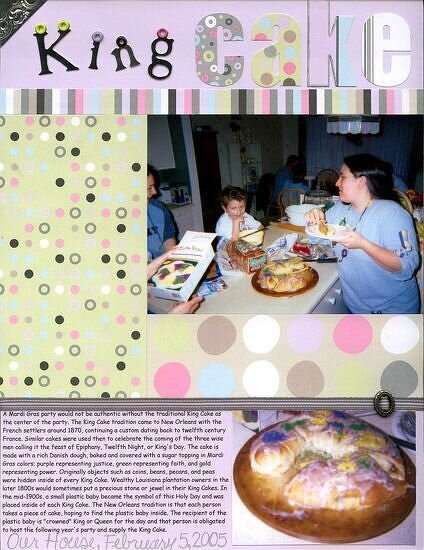EXTRA 11% OFF Orders $100+ With Code: THANKYOU

Cheers
Be the first to cheer this project!

Be the first to cheer this project!
 Give a Cheer
Give a Cheer
Supplies used:<BR>*PPs (including solid purple), ribbon, and die cut letters: KI Memories<BR>*Metal corner, eyelets, metal eyelet charm letters, and ribbon charm: Making Memories<BR>*Font: Comic Sans MS<BR>*Pen: Gelly Roll<BR><BR>Journaling reads:<BR>A Mardi Gras party would not be authentic without the traditional King Cake as the center of the party. The King Cake tradition came to New Orleans with the French settlers around 1870, continuing a custom dating back to twelfth century France. Similar cakes were used then to celebrate the coming of the three wise men calling it the feast of Epiphany, Twelfth Night, or King's Day. The cake is made with a rich Danish dough, baked and covered with a sugar topping in Mardi Gras colors; purple representing justice, green representing faith, and gold representing power. Originally objects such as coins, beans, pecans, and peas were hidden inside of every King Cake. Wealthy Louisiana plantation owners in the later 1800s would sometimes put a precious stone or jewel in their King Cakes. In the mid-1900s, a small plastic baby became the symbol of this Holy Day and was placed inside of each King Cake. The New Orleans tradition is that each person takes a piece of cake, hoping to find the plastic baby inside. The recipient of the plastic baby is “crowned” King or Queen for the day and that person is obligated to host the following year's party and supply the King Cake.<BR><BR>TFL! ~Dana Marie
No products have been added to this project.
Thanks for spreading positivity!